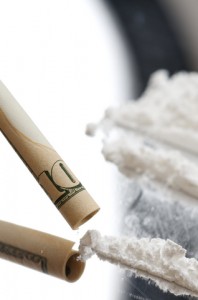Table of Contents
Watching the rich and famous has always been a favorite pastime of many. Even the Iliad, one of the oldest pieces of writing known to Western culture, contains juicy bits of gossip about famous warriors, and the people those warriors loved and fought with. The rise of a celebrity culture, in which people are revered simply because they’re famous, not because of anything notable they have contributed to the culture, began in the 1750s, according to one study, and it’s a trend that continues to this day. Now, entire sections of the newspaper and thousands of online fan sites contain juicy bits of gossip about what the rich and famous are doing, and how they’re better or worse than the people who follow them. Often, these stories contain information about addiction, and the struggles celebrities have with their addiction issues. While many of these stories contain salacious details of no interest to those wanting to learn more about addiction, there are some tidbits contained in even the most famous stories that might shine a light on the problem of addiction, and how it might best be overcome.
The Link Between Celebrity and Addiction
The number of public figures who have battled addiction is long, and it contains some of the most important and lauded public figures from stage and screen. A short list of entertainers known to have dealt with addiction includes:
- Robert Downey, Jr.
- Amy Winehouse
- Whitney Huston
- John Belushi
- Marilyn Monroe
- Elvis Presley
- Judy Garland
- Lindsay Lohan
- Demi Moore
- Tatum O’Neil
Sometimes, using drugs or alcohol becomes a rite of passage for a specific type of celebrity, and it becomes expected that those who enter this group will experiment with the substances the others use. The online magazine Paste suggests that this is what happened in the jazz community in the 1940s and 1950s, providing the names Billie Holliday, Charlie Parker and Dexter Gordon as evidence.

Understanding the Link
It’s hard to know what makes celebrities turn to drugs and alcohol in such large numbers, but lifestyle may have a role to play. Jazz musicians in the 1940s and 1950s, for example, were often asked to travel very long distances between shows they held, and they were often travelling on rickety buses that were far from comfortable. Drugs may have allowed these musicians to sleep on cue, and then other drugs might have allowed them to wake right up when the show was about to begin. In a way, the drugs helped to fuel the work they needed to do to maintain their celebrity.
Those public figures who have recovered from the addictions they faced may also provide cues about how an addiction tends to take hold. In 2012, the singer Elton John told interviewers at NPR that he used drugs to help him create symmetry between his public persona and his private life. He says, “… onstage I had all the bravado and the chutzpah necessary to do a great show, but there was no balance in my life.” When the show was over, he was painfully shy and unable to give interviews and perform in the way his fans expected him to perform. Drugs allowed him to close that gap. If shy people are thrust into the spotlight of a 24/7 celebrity news cycle, it’s easy to see how drugs might enable them to deal with the pressure without breaking.
Some celebrities come to addiction via the same paths non-celebrities take toward addiction. For example, Carrie Fisher developed a longstanding addiction issue due, in part, to her struggles with mental illness. She says, “I was born into everything; I had everything. But I could never feel my life. So much of it is good, and I can’t feel it.” This might be a familiar statement to many people dealing with mental illness, and sometimes, drugs seem to provide a ready solution. Drugs can make these people feel something, even if only for a moment.
Common Pathways
Unique Circumstances
 What celebrities have, that most common people do not, is an almost unlimited amount of money. While buying thousands of dollars of drugs might be cost-prohibitive for the average person, and concerns about money might drive that person to rehab, a celebrity might not even blink at spending thousands on drugs and might never be prompted to make lifestyle changes that would result in rehab.
What celebrities have, that most common people do not, is an almost unlimited amount of money. While buying thousands of dollars of drugs might be cost-prohibitive for the average person, and concerns about money might drive that person to rehab, a celebrity might not even blink at spending thousands on drugs and might never be prompted to make lifestyle changes that would result in rehab.
In addition, as an article in USA Today puts plainly, many celebrities have, “…a horde of enabling hangers-on who are financially dependent on them and thus more motivated to supply substances for them.” A celebrity who is anesthetized with drugs might be someone who is easier to control, someone who is easier to steal from and someone who is easier to manipulate. The layers of protection a celebrity has might serve to insulate the celebrity from any good influences that could lead to rehab. This could help to lock a substance abuse issue in place.
Getting Well
- Exhaustion
- Stress
- Dehydration
- Overwork

Sometimes, these coded words are quickly revealed. Other celebrities publically announce their struggles in the hopes of gaining some respect and privacy in the process. It can be a risky move, however, as celebrities with substance abuse problems might find it difficult to secure new projects in the future. It’s not a risk most celebrities would willingly take. As a result, facilities that take in celebrity clients are often extremely careful about security, ensuring that no cameras are allowed on the grounds and asking other residents to sign lengthy non-disclosure statements, ensuring that they will not reveal the names and details of the other people in care.
So-called “celebrity rehab” television programs sometimes promise to help cure celebrities of their addictions, while helping them to raise money and boost their television viewing audience. Unfortunately, these programs have a very low level of success. In fact, Celebrity Rehab with Dr. Drew on VH1 had the misfortune of losing two former cast members to addiction struggles, according to Hollywood.com. It’s possible these programs fail, however, due to their short duration. These programs sometimes allow addicts to leave in as few as 21 days, while the standard treatment program for addiction lasts for 90 days.
If you’d like to know more about how addiction therapy works, and how the care can be tailored to meet the needs of someone who wants recovery, please contact us at Axis. Our luxury program might not be the right choice for everyone, but we’d love to talk with you about our programs and give you information on successes we’ve had in the past. Please contact us today.


